Building Medusa: The Perfect DIY Fire Light
Take Your Career to the Next Level with Unparalleled Filmmaking Education from an ASC Cinematographer.
Get Started with Shane’s Inner Circle Now.
Join now and never miss another article like this!
You will learn:
- How to use a Medusa Light for a scene.
- The tools and materials needed to start building.
- Use practical sources from home to create your light.
- How to use this tool safely on set.
- How to manipulate fire looks by using DIY sources.
- Understanding how to use an uneven source to create cinematic images.
- Understanding how to properly use dimmers to get your look.
- Which gels to use to achieve your light quality?
- The tricks and tips when using this light source on the job.
The look of fire has always been one of the most alluring sources that one could harness. The uneven and organic look of the light is dream-like and hypnotizing. While it looks beautiful, it doesn’t always emit a lot of light and can be extremely hard to control when on the job. Once you bring in a bunch of other lights and solutions, it becomes cumbersome and too much work.
Shane Hurlbut, ASC designed a versatile and mobile solution to creating that fire look. Utilizing only items from household and store items, he created a fire light that is based on Medusa’s hair. It creates an easy-to-use source that anyone can build for a nominal fee. This article breaks down what tools and materials you’ll need to create this light. You’ll leave with a tool ready for your next shoot!
Get this now in The Filmmaker’s Guide to DIY Lighting
Schedule 1-on-1 Video Call with Shane Hurlbut, ASC
Looking for mentorship in the film industry? Schedule a 1-on-1 meeting with Shane Hurlbut, ASC today! This is where you can get expert advice from an industry professional on your career or a particular project.
About Filmmakers Academy Cinematographer Mentor Shane Hurlbut, ASC
Director of photography Shane Hurlbut, ASC works at the forefront of cinema. He’s a storyteller, innovator, and discerning collaborator, who brings more than three decades of experience to his art. He is a member of the American Society of Cinematographers, the International Cinematographers Guild/Local 600, and The Academy of Motion Picture Arts and Sciences.
Hurlbut frequently joins forces with great directors: McG’s Netflix Rim of the World and The Babysitter, plus Warner Bros. We Are Marshall and Terminator: Salvation; Scott Waugh’s Need for Speed and Act of Valor; and Gabriele Muccino’s There Is No Place Like Home and Fathers and Daughters. His additional film credits include Semi-Pro; The Greatest Game Ever Played; Into the Blue; Mr 3000; Drumline; 11:14, which earned Hurlbut a DVDX nomination; and The Skulls. Notably, his television credits include the first season of AMC’s Into the Badlands.
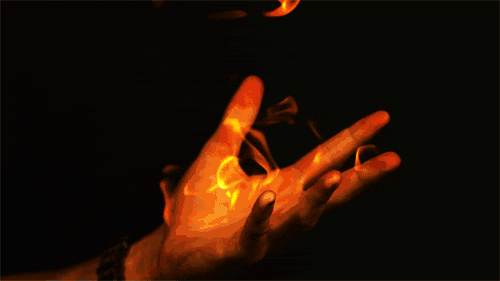

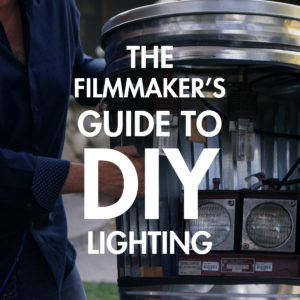

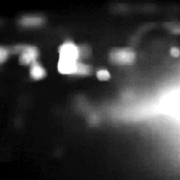
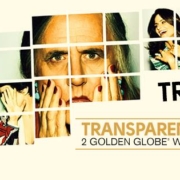

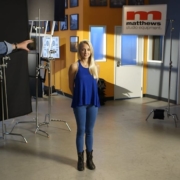
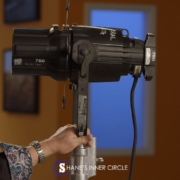
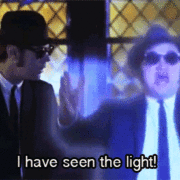


that was f****king owesome man . this is what is called creativity .I start building my own kit of lighting its hard to get what you want but the result great … I try to save money to buy other gears prime lenses slider…….ext.
shane I can²t tell you how this blog help my a lot thanks for your hard work..
regards
visualMED. Thanks for the kind words and support. Kudos to my cinematography interns for building the light and shooting the tests.
Wow Shane, this is one extensive DIY post that’s so different form the rest of your posts. My shoots are much smaller scale for corporate films but it’s great for me to know how you do it for movies.
Thanks for the very detailed post. Terrific interns you got there!
Baron, thanks so much. Yes I feel the interns rocked this baby out.
developed by Zeiss
This is amazing. I have to find someone who is handy with tools and knows how to build stuff. I’m not so good at it.
Awesome trick. In love with this blog.
N.K.Osborne, ha ha, yes sometimes you have to pull out the carpenter skills. Thanks for all your kind words and support.
The lens Kubrick used for the candlelight scenes was actually a F 0.7 developed by Nasa – only ten in the world.
http://en.wikipedia.org/wiki/Barry_Lyndon
kubrick fan, thank you so much for the clarification. I have changed it to reflect. Much appreciated.
Great article and awesome idea! I have one correction though, John Carpenter actually was one of the first to develope the steadycam for Halloween in 1978. The Shining is still an awesome film experience though (Slow burns live on!).
not that it really matters but it was Bound for Glory (Wexler). Second time today I’ve heard someone get this wrong.
http://en.wikipedia.org/wiki/Bound_for_Glory_(film)
Shane – that is single handedly the neatest idea I’ve seen in lighting in a long time.
Wonderful!
John P. Hess, thank you so much for your kind words. I think the interns kicked some ass on the build
John P. Hess, thank you so much for your kind words
Hey Shane,
Awesome post as usual. I absolutely love this site and all the work you do to spread the love…
@ NightWalker, I have to respectfully disagree, Garrett Brown first used the steadycam (I believe) on Rocky, 1976.
Again, Shane, thanks…
D Phillips, thank you so much for your kind words and support
that is a very cool project… call me lazy… but any television set, lcd panel, or video projector and a “Fake fire” christmas log burning video would be easier to set up…. and just as effective.
Donut, you can go with that, I will go with my Medusa. To each his own
Cool! I didn’t know about that bulb dip!
Jendra Jarnagin. Thanks for the comment and support.
Hi Shane,
You have a great website, and kudos for keeping alive the 100+ year-old tradition of color-dipping bulbs in such a clever way!
Per “Barry Lyndon’s” director of photography, John Alcott, “Argh!!! THAT rubbish! Stanley wanted the NASA lens, and it got lots of ink thanks to Ed DiGiulio, president of Cinema Products. But in almost every shot we hid grain-of-wheat bulbs behind every wick, so we could close down a few stops to capture a slight yellow hue in the candle flame. Otherwise, the candle flames would become so many white-hot splotches on screen.” John said they used “thousands” of grain-of-wheat bulbs, run through Variacs and dimmers. Custom-made triple-wick candles helped to increase the stop, as candle wax burns at the same temperature, regardless of one or three wicks.
The above conversation happened in Washington DC, where John had wrapped “No Way Out” the day before. He was leaving for a well-earned vacation the next morning, and I had just arrived to shoot the film’s opening and closing credits with a Gyrosphere helicopter mount the next day. I was disappointed for missing an opportunity to observe the maestro on set…so I suggested he take a break from packing and have lunch. Ostensibly, lunch was for me to learn how to preserve the look he wanted (no 85 and a dense negative to print in the 40’s). Of course, John knew that mostly I wanted to pepper him with “inside-baseball” questions and he graciously obliged. But John got surprisingly prickly when asked about the “Barry Lyndon” candle scenes — that as a DoP worth my salt I should know better than to believe everything I read! A few weeks later John suffered a fatal heart attack while on vacation, which shocked and saddened all who had the privilege of working for him.
Jon Kranhouse, thank you so much for that history lesson. I love John Alcott’s work, what an amazing visionary.
Hey Shane, I was wondering if you could give me a little insight into how your lighting approach changes when you’re shooting commercial work vs. creative work. I’m a young cinematographer currently working for a new media production company and in new media often times production quality and creative lighting take a back seat to turn around time and keeping the budget low.
How should we as cinematographers think of lighting when the content we’re producing isn’t strictly narrative? I can provide examples to you of the shows we shoot if that’d help you frame where I’m coming from. Pun intended.
Sean Finnegan, you never change. It is up to you as the cinematographer to make it sing no matter what the budget. I have worked with 200 million or 5 thousand. It is shaping your lighting and camera concept to fit the budget.
I have plans to build this firelight for an upcoming horror film I am shooting. It is a great design Shane. I just wanted to post here that Rosco has discontinued the Colorine. I did find that Studio Depot has some red and amber but were out of stock on the yellow.
Scott Mohrman, yes, I am glad you found them. You can use Yellow paint, it will just burn quickly and you will have to re-dip.
Amazing ! Shane …I teach Cinematography at Emerson college . We used the candle light effect in my advanced class. ( built and used in class)! The students loved it so much that several more were constructed and are now permanent fixtures in the equipment package.
Including my own.
Cheers
J
Joey W. Kolbe, ha ha, that is awesome The Medusa LIVES!!!!
Medusa has a suttle cameo @ 0:34
Nit Picker,yeah baby!!!! Thanks so much for the support
“Stanley Kubrick was an absolutely brilliant filmmaker. On the film Barry Lyndon, Kubrick wanted to shoot only with candlelight, so he asked NASA to design a 50mm lens that would have an f-stop of a 0.7. There are only 10 in the world.”
That still reads wrong.
The lenses were made by Zeiss for NASA, for the Apollo missions.
Kubrick did not ask NASA to make a lens for him.
He did however get a hold of at least one and had both the lens and a camera modified to work together.
“Barry Lyndon” indoors used Candles, but there were very large lamps used outside the windows, so even the shots ‘lit with candle light’ still had some external sources.
http://www.visual-memory.co.uk/sk/ac/len/page1.htm
https://www.dpreview.com/articles/9811242514/kubrick-s-f-0-7-lenses-now-available-for-rent-but-start-saving-up